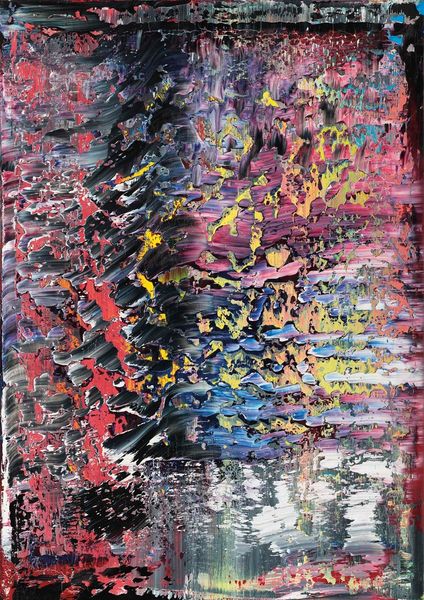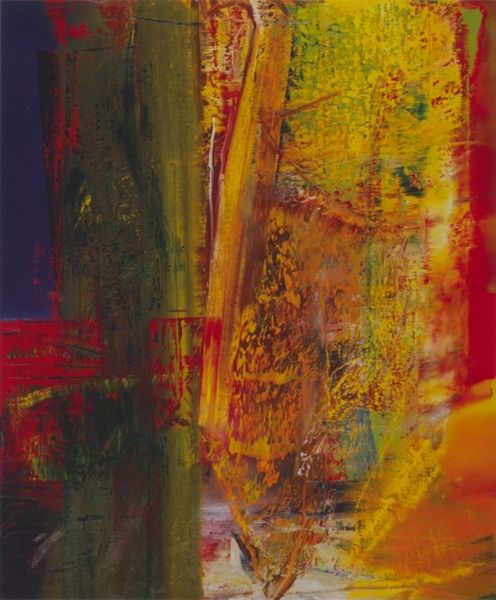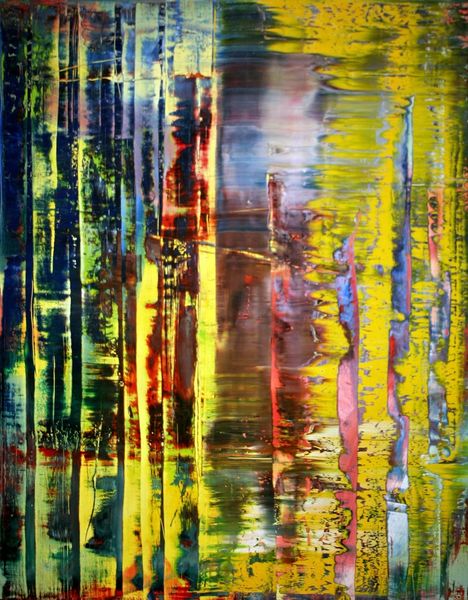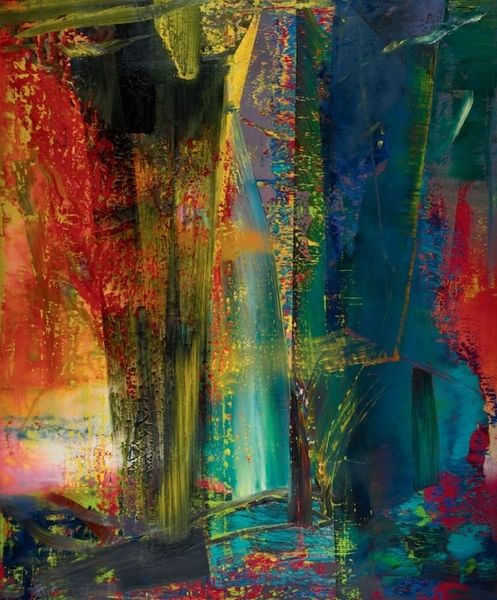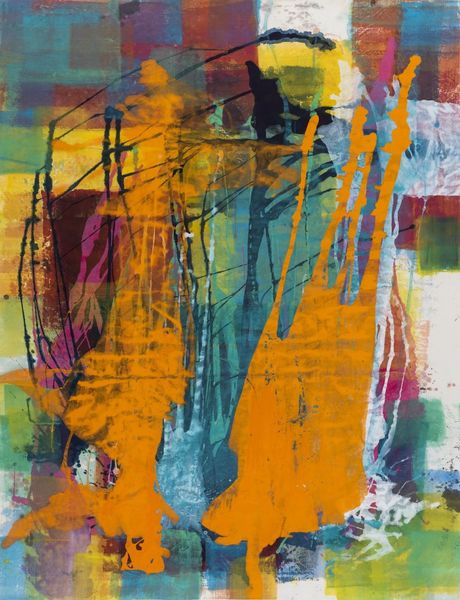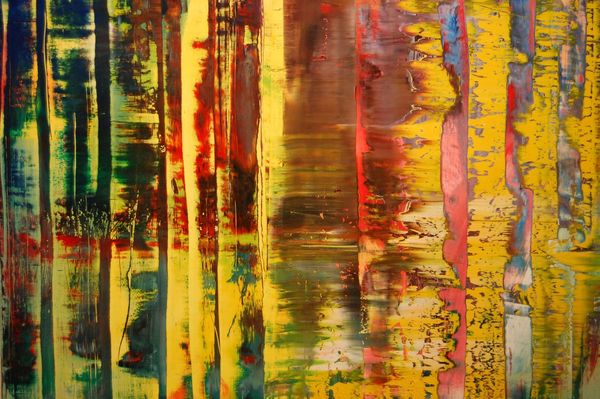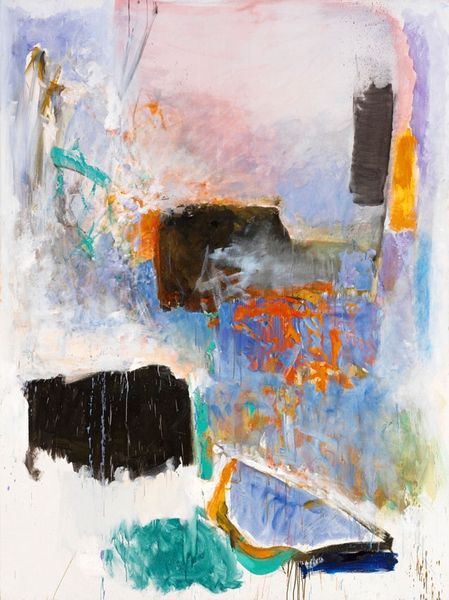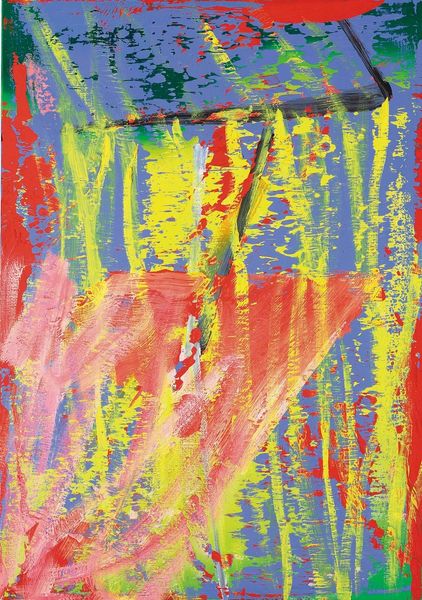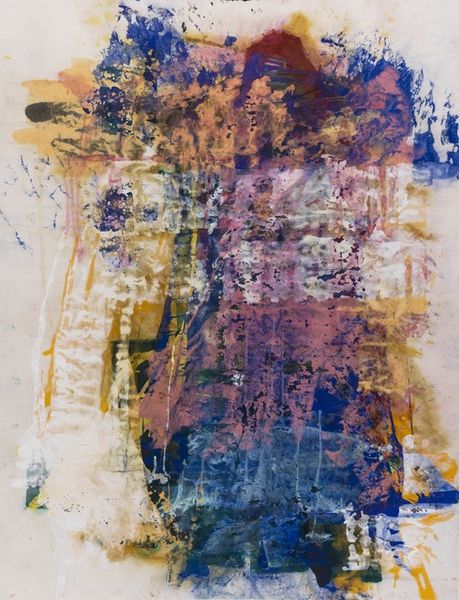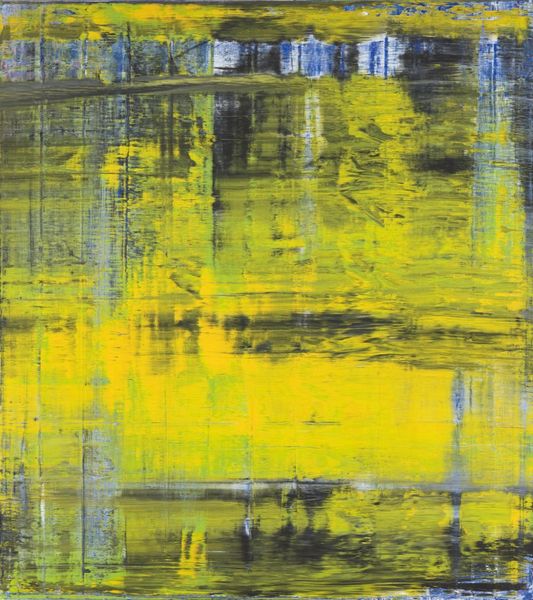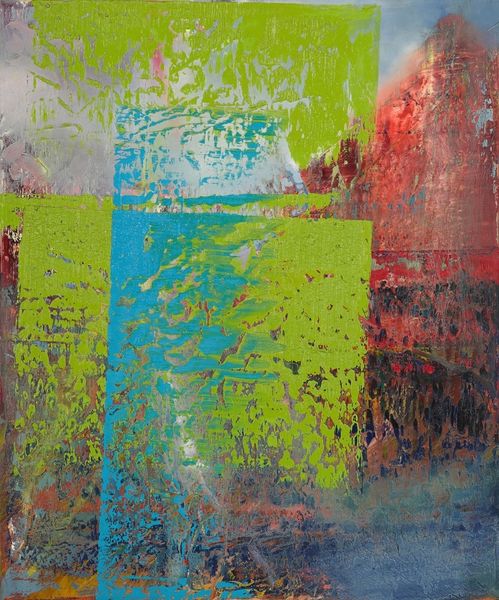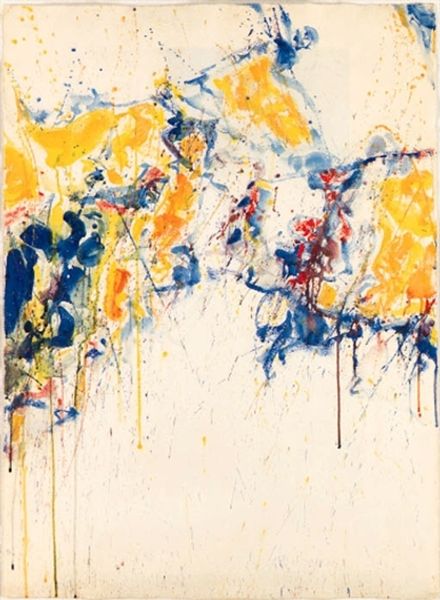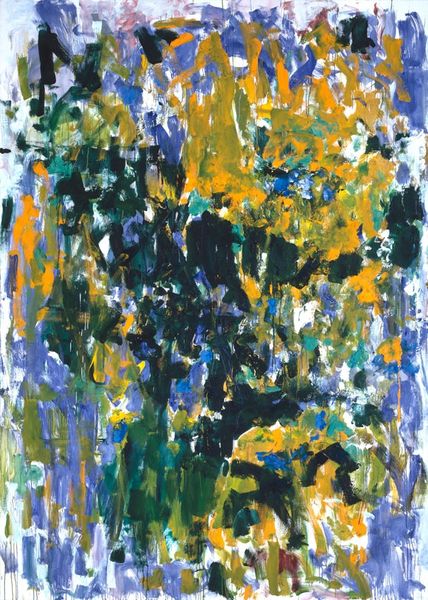
#
capitalist-realism
Copyright: Modern Artists: Artvee
Curator: Before us, we have Gerhard Richter’s “1ST MAY 1989,” a piece crafted in 1989 using acrylic on canvas. It’s an intriguing surface, isn't it? Curator: It certainly grabs your attention. I find its overwhelming yellow hue unsettling—it almost feels like a distorted memory, a sunshine filtered through trauma. Curator: Richter's abstract works, like this one, invite speculation on his process. Consider the application of paint – the drags, scrapes, and layers upon layers of color. It seems less about representing a scene and more about the pure act of painting itself. The surface becomes a record of its own making. Curator: Exactly. The date in the title, “1ST MAY 1989,” is particularly significant. May 1st is International Workers' Day, a date steeped in socialist and communist history. The date situates the work within a very specific political context, one of upheaval and change, particularly in Germany. The cheery yellow could then be read as ironic, masking a deeper tension or even violence. Curator: I'm fascinated by your point about Workers’ Day casting it in that specific light. But from my point of view, the materials tell us another story: Richter's use of acrylic allowed for quicker drying times and the ability to layer colors rapidly, something central to his method. Look at how that physicality interacts with the symbolic charge you've identified. Curator: Absolutely, it’s the tension between those material properties and that historical weight that’s so potent. He seems to be critiquing the grand narratives of history through abstraction, questioning the very act of representation in a time of profound political shift. Consider, also, how abstraction itself can be a political act, especially for an artist working in post-war Germany. Curator: And perhaps a way to engage with, even to undermine, traditional artistic conventions tied to propaganda or political messaging. His exploration of surface, texture, and chromatic relations—this almost feels industrial in the way the acrylic has been applied, which seems like an open rejection of older painting methods tied to figurative or idealistic renderings of people, places and ideas. Curator: I agree, Richter is provoking us. By refusing to offer a clear narrative, he invites us to consider the complex layers of history, memory, and representation, questioning how dominant ideologies shape our perceptions of the world around us. The date gives us a firm place, historically and politically to ground our perspective of a canvas awash in emotion and movement. Curator: So while the application of those layers is crucial to his exploration of painting’s material possibilities, its combination with such loaded context gives the work an unexpected depth. Curator: Indeed. The artwork becomes a point of departure to consider painting within a political frame, and the cultural meanings bound within.
Comments
No comments
Be the first to comment and join the conversation on the ultimate creative platform.
